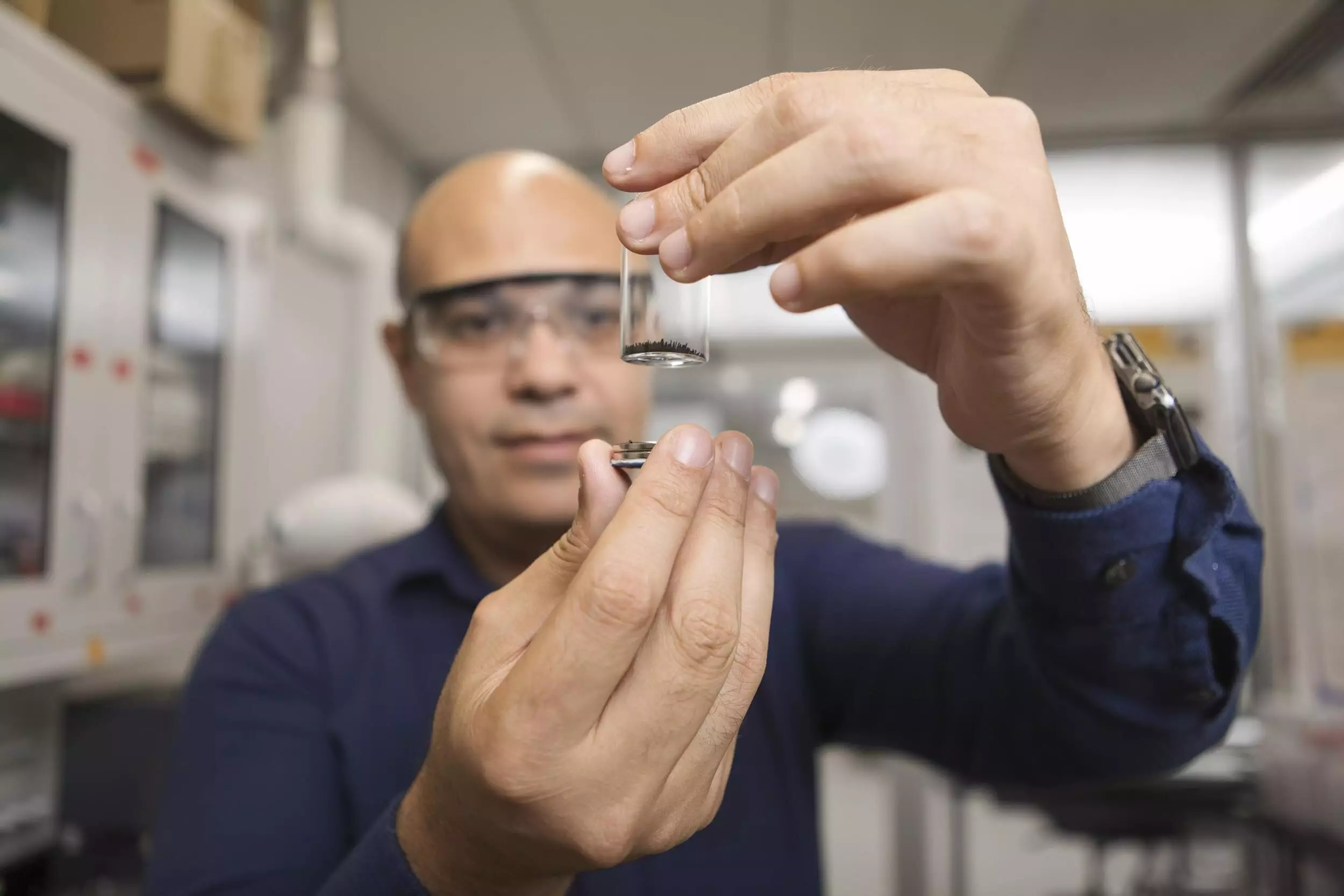Quantum computing has the potential to revolutionize the world, allowing massive health and science computation problems to be solved exponentially faster than by classical computing methods. However, one major limitation of quantum computers is that they can only operate at extremely low temperatures. This necessitates the expensive process of cooling both the computers and the materials used. Fortunately, physicists at The University of Texas at El Paso (UTEP) have made a groundbreaking discovery in the field of quantum computing. Led by Dr. Ahmed El-Gendy, the team has developed a highly magnetic quantum computing material that functions at regular room temperature, eliminating the need for costly cooling processes.
In order for quantum computers to operate effectively, they must be kept at temperatures close to absolute zero (-459 degrees Fahrenheit). The strong magnetic properties of traditional magnets used in quantum computers only function at these low temperatures. This restriction has posed a significant challenge for the widespread adoption of quantum computing technology. The UTEP team recognized the need for a quantum computing material that could operate at room temperature, thus bypassing the expensive and impractical cooling requirements.
Since 2019, the UTEP team has been dedicated to creating new magnetic materials specifically designed for quantum computing. One key aspect of their research has been focused on developing magnets that do not rely on rare Earth materials, as there is a shortage of these resources. By utilizing alternative materials, the team aims to ensure the sustainability and accessibility of quantum computing technology in the future.
After several years of experimentation, the team achieved a breakthrough. They successfully created a mixture of aminoferrocene and graphene, which exhibited magnetic properties that surpassed their expectations. The material demonstrated superparamagnetic behavior, which has not been observed in any previous materials. This unexpected result opens up the possibility of constructing a quantum computer that operates at room temperature.
While the discovery of the highly magnetic material is a significant achievement, there are still many challenges that lie ahead. The process of manufacturing the material proves to be difficult and time-consuming. The UTEP team is currently focused on optimizing the production process to enhance the material’s effectiveness and efficiency. Additionally, they are actively seeking collaborations with experts in the field of quantum computing to further refine their findings.
The development of a room temperature quantum computer has immense implications for various industries and scientific research. By eliminating the need for expensive cooling processes, the accessibility and affordability of quantum computing technology will greatly increase. This breakthrough could accelerate advancements in fields such as healthcare, scientific simulations, and optimization problems that require massive computational power. The potential to solve complex problems exponentially faster than classical computers could lead to groundbreaking discoveries and advancements in various areas of human knowledge.
The achievement of developing a highly magnetic material for quantum computing at room temperature marks a significant milestone in the field of quantum computing. The UTEP team’s discovery brings us closer to the realization of practical quantum computers that can operate under normal conditions. However, there is still much work to be done to optimize the material and ensure its viability for real-world applications. Through further research and collaborations, the dream of room temperature quantum computing may soon become a reality, unlocking unprecedented possibilities for technological advancement.


Leave a Reply